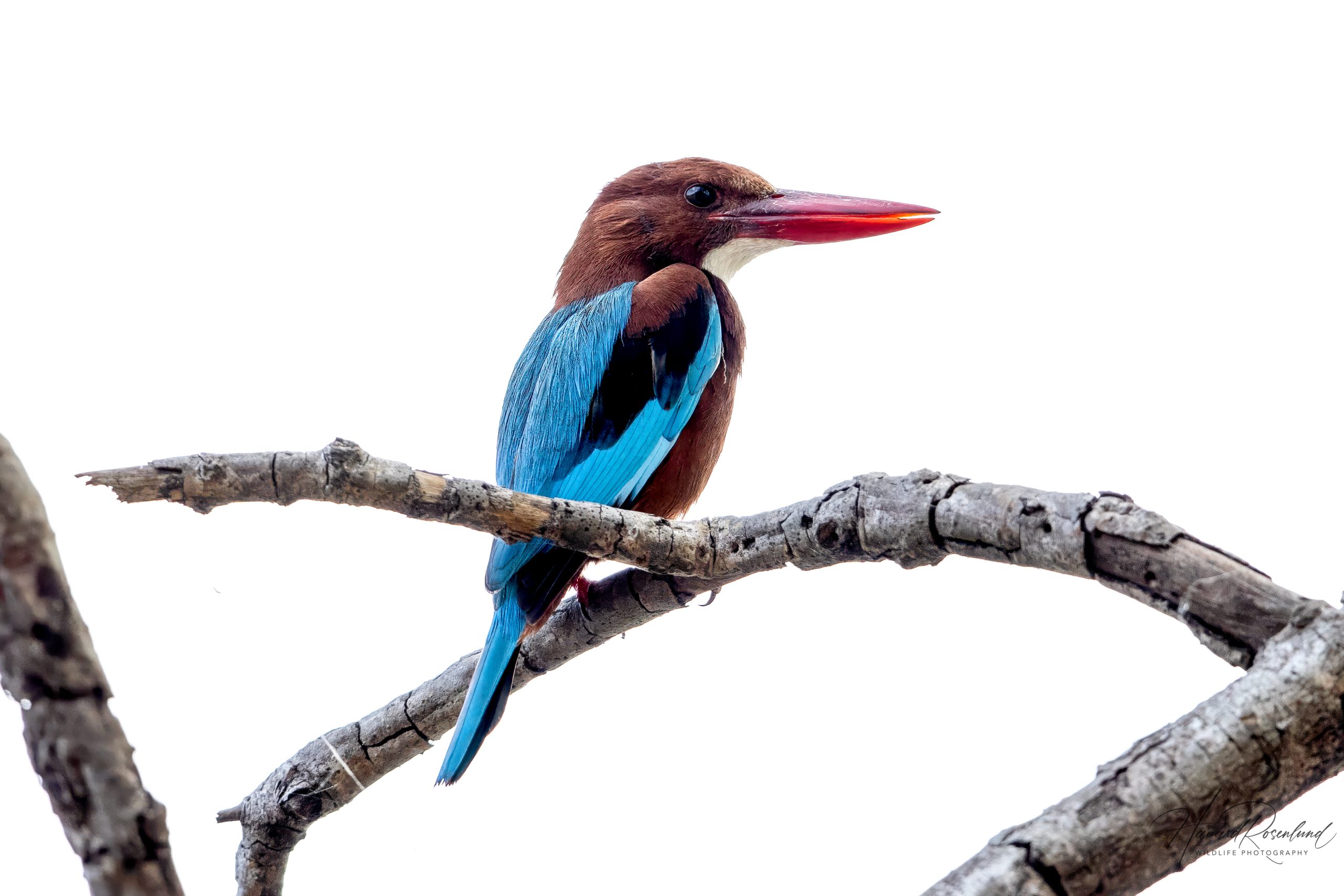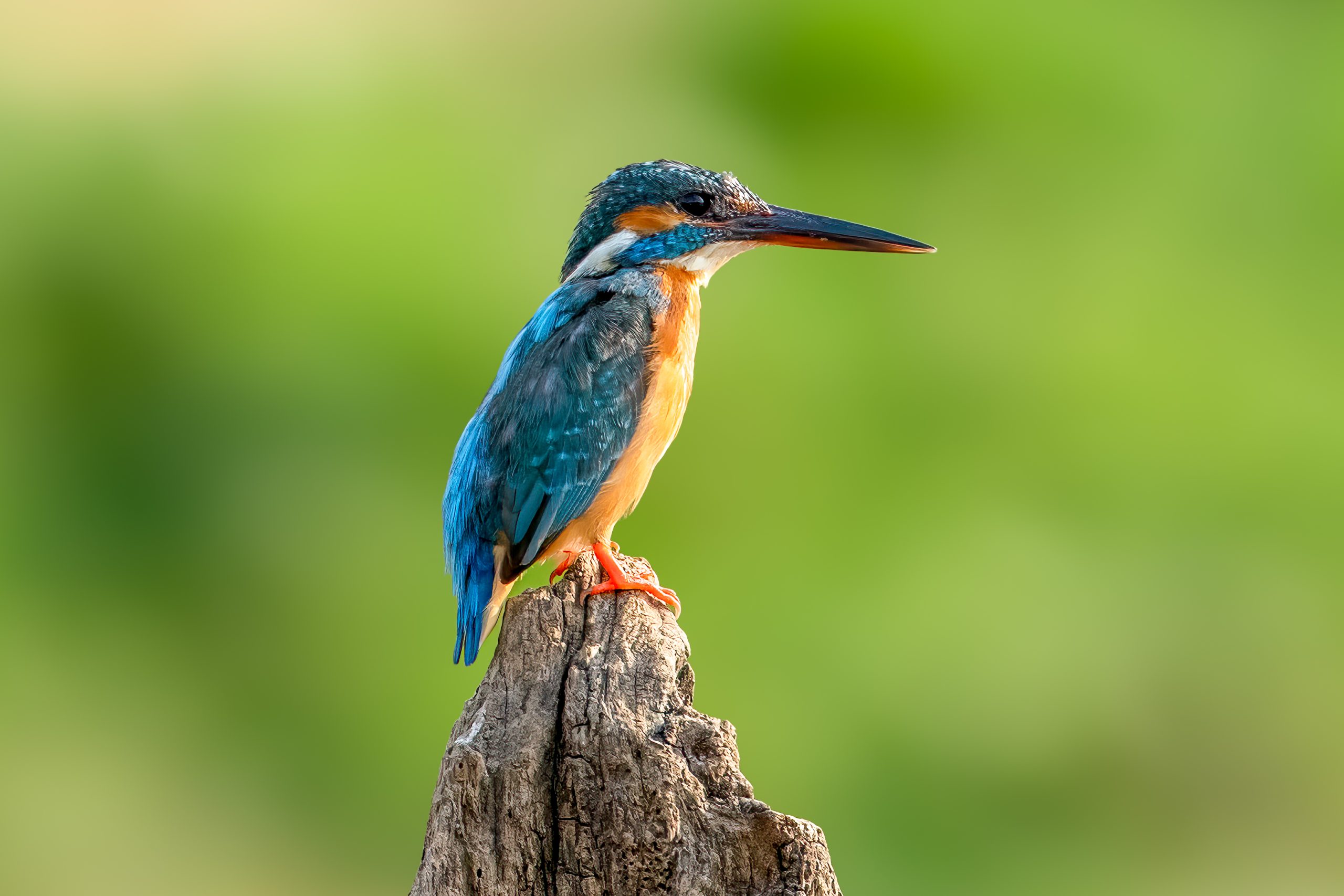White-throated Kingfisher
(Halcyon smyrnensis)
Description
The white-throated kingfisher (Halcyon smyrnensis), also known as the white-breasted kingfisher, is a striking bird found across southern Asia, from Asia Minor in the west, across the Indian subcontinent, to Southeast Asia in the east. It is recognized by its vivid blue back, wings, and tail, contrasted by a rich chestnut head, shoulders, flanks, and lower belly. The white throat and breast are the most distinctive features, giving this species its name. Its large, bright red bill is another prominent feature. This kingfisher measures around 27-28 cm (10.6-11.0 in) in length, with a wingspan of about 40-50 cm (16-20 in). Compared to many other kingfishers, the white-throated kingfisher has a more extensive range of habitats and a broader diet, making it less dependent on water bodies than species like the common kingfisher (Alcedo atthis), which primarily inhabit rivers and streams.
Diet & habitat
White-throated kingfishers are highly adaptable and occupy diverse habitats, including wetlands, agricultural areas, forest edges, and even urban environments. They are often found near water but can thrive far from it, indicating their versatile nature. Their diet is varied and includes insects, crustaceans, small fish, amphibians, and even small reptiles and rodents. They hunt by perching on a high vantage point and swooping down to capture prey with their strong bill. This technique is efficient for both aquatic and terrestrial prey, highlighting their adaptive feeding behavior.
Nesting
Breeding occurs primarily from February to May, though this can vary with local conditions. White-throated kingfishers are monogamous and display strong territorial behavior during the breeding season. Courtship involves aerial displays and feeding rituals, where the male presents food to the female.
Nesting sites are usually excavated in earth banks or termite mounds, where the female lays 4-7 eggs. The incubation period lasts about 20-22 days, with both parents participating in incubating the eggs and feeding the chicks. Fledging occurs approximately 19-21 days after hatching, and the juveniles are relatively independent soon after leaving the nest.
Status
The white-throated kingfisher is listed as least concern on the IUCN Red List. Its extensive range and adaptability to various habitats contribute to its stable population. However, localized threats such as habitat destruction and pollution can affect certain populations.










